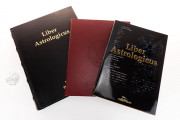Saint Isidore of Seville is, without a doubt, one of the most outstanding men of Late Antiquity. He was one of the founding fathers of the Middle Ages and, above all, the main exponent of the cultural revival of 7th century Visigothic Spain.
It can be said, there are not many medieval authors to not have drawn on Isidore's huge output, in one way or another.
When Isidore was born, around 560 AD in Cartagena (or more likely in Seville), Visigothic Spain was undergoing a period of political and social turmoil. In 551 AD, Imperial Byzantine troops established themselves in Betica and the Southeast coast.
The Visigothic kings Athanagild and Liuva I fought against the occupying troops, who would eventually be defeated and expelled from the Iberian Peninsula in 587 AD by King Leovigild.
The Liber Astrologicus, also known as De Natura Rerum or Liber rotarum, is a unique work dedicated to the pious and well learned king Sisebut (612-620 AD).
It is a book on the social sciences and is divided into three basic parts: Chronology (days, weeks, months, seasons...); Cosmos and various heavenly bodies (earth, sky, planets, sun, moon, stars, ...); and atmospheric and telluric phenomena (thunder, lightning, rainbow, winds, earthquakes, ...).
The book ends with a hexametric poem, written by king Sisebut himself, which has survived to our time because it was always included as an epilogue to the many copies made of Isidore's treatise.
Written in Carolingian script.
We have 1 facsimile edition of the manuscript "Liber Astrologicus by Saint Isidore of Seville": Liber Astrologicus de San Isidoro facsimile edition, published by Millennium Liber, 2014
Request Info / Price











